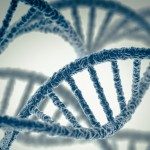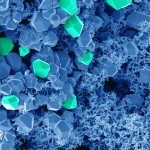Date
16
Jan 2020
Time
11:00:00
25-28 Rue du Dr Roux, 75015 Paris, France
Address
Building: rdc Centre François Jacob Room: auditorium du CFJ
Location
2020-01-16 11:00:00
2020-01-16 12:30:00
Europe/Paris
“On modified DNA and synthetic genetic polymers” Genomes and Genetics department seminar
Abstract: DNA serves as the repository of genetic information and thus functions as the blueprint of life. However, due its intrinsic properties, DNA and chemically related analogs have advanced as warhorses in multiple applications […]
25-28 Rue du Dr Roux, 75015 Paris, France
About
Abstract: DNA serves as the repository of genetic information and thus functions as the blueprint of life. However, due its intrinsic properties, DNA and chemically related analogs have advanced as warhorses in multiple applications including nanotechnology, therapeutics, and diagnostics that markedly deviate from its natural function. In this context, aptamers are single stranded nucleic acid molecules that are capable of recognizing and binding targets with high affinity and specificity. Aptamers are often considered as the nucleic acids pendant of protein antibodies but they offer multiple advantages compared to their proteinaceous counterparts including the ease of isolation and large-scale synthesis, low immunogenicity, as well as thermal and chemical resistance. However, aptamers are made of natural DNA or RNA scaffolds and are thus prone to nuclease degradation. In addition, aptamers have a limited arsenal of functional groups and thus display a low inherent propensity at binding to protein targets devoid of cationic regions or to hydrophobic pockets. Chemical modification is thus required to improve the global properties of aptamers. One convenient strategy for the modification of aptamers involves the replacement of nucleoside triphosphates by modified counterparts directly in selection experiments which are used to isolate aptamers. Here, I will present the different approaches pursued in our lab to chemically modify aptamers and DNA/RNA oligonucleotides in general. In particular, I will highlight the selection of an aptamer against a malaria biomarker. The recently identified aptamer was equipped with an exotic chemical modification which was involved in a new type of binding interaction with the target protein. Due to its very high specificity, this modified aptamer is currently being evaluated as a biosensor for the detection of malaria.
Location
Building: rdc Centre François Jacob
Room: auditorium du CFJ
Address: 25-28 Rue du Dr Roux, 75015 Paris, France



